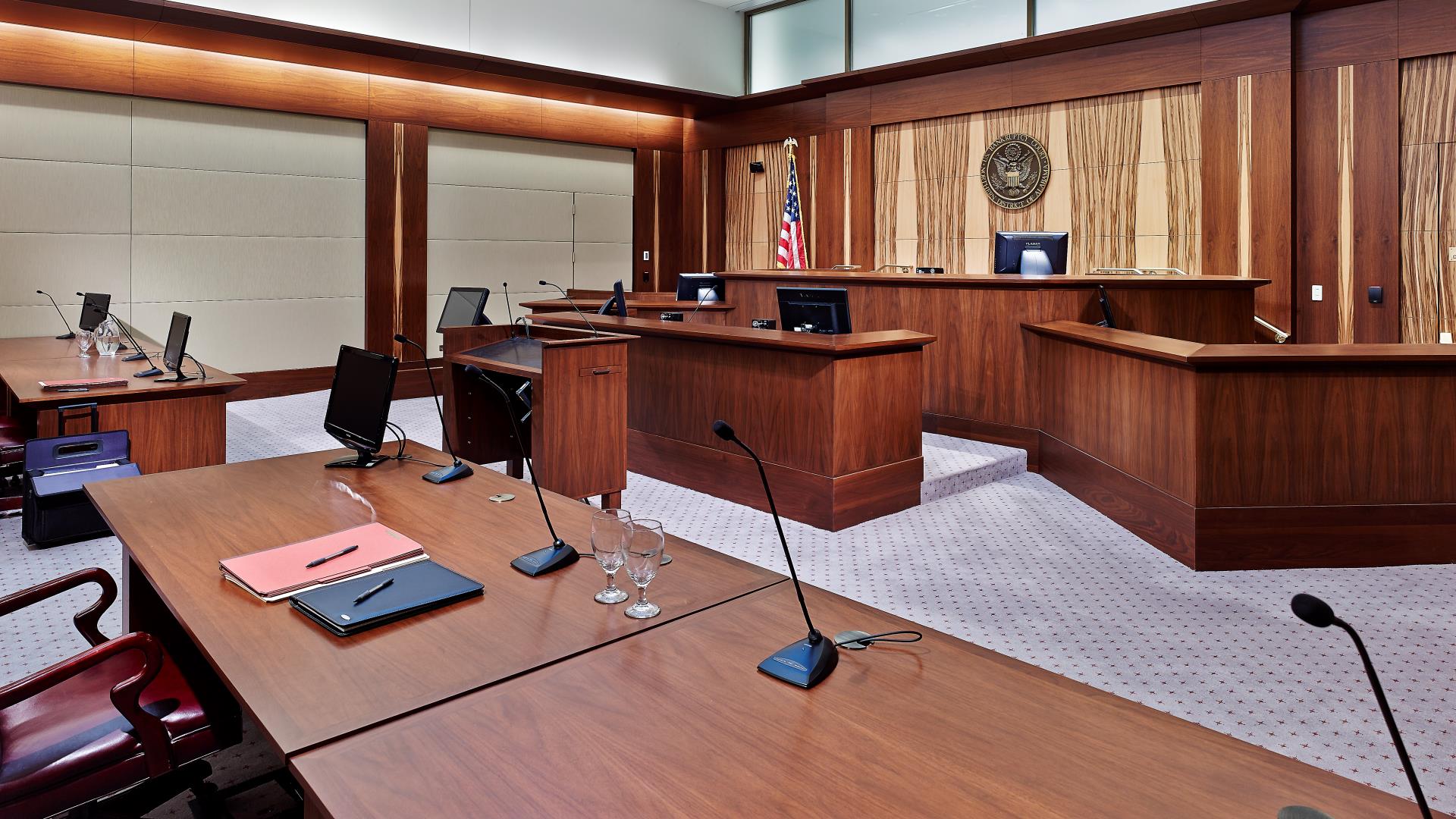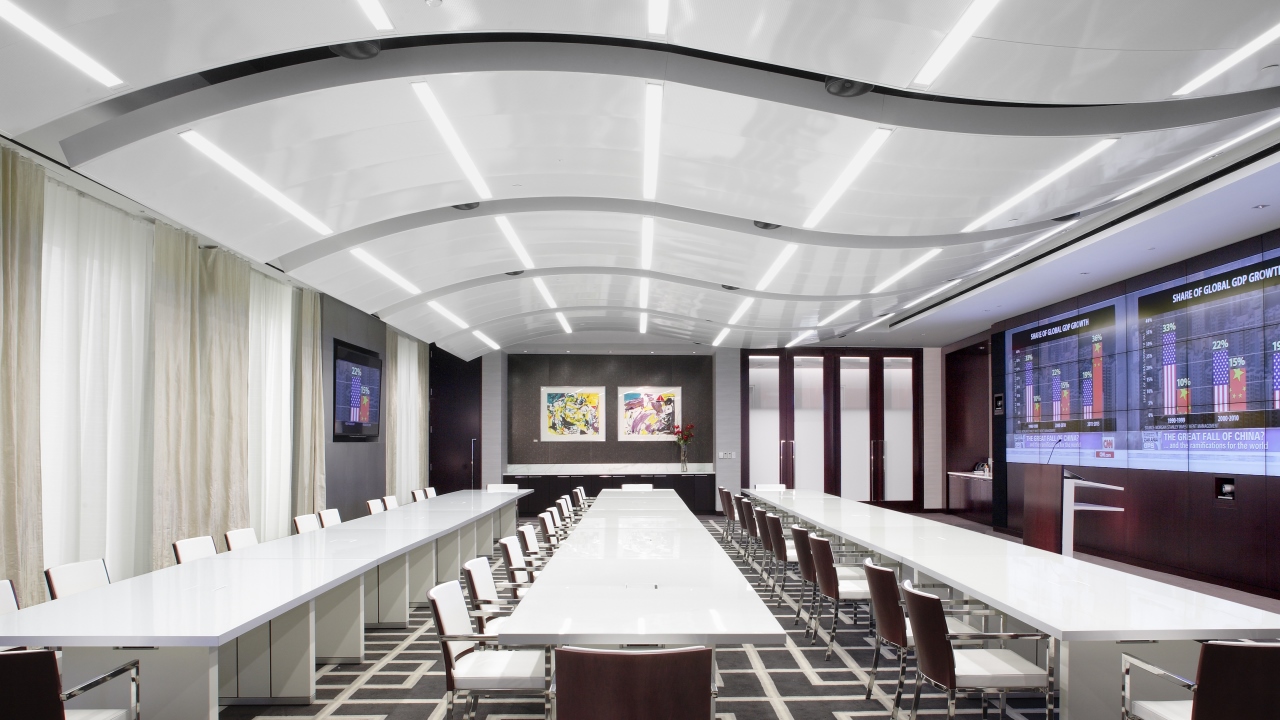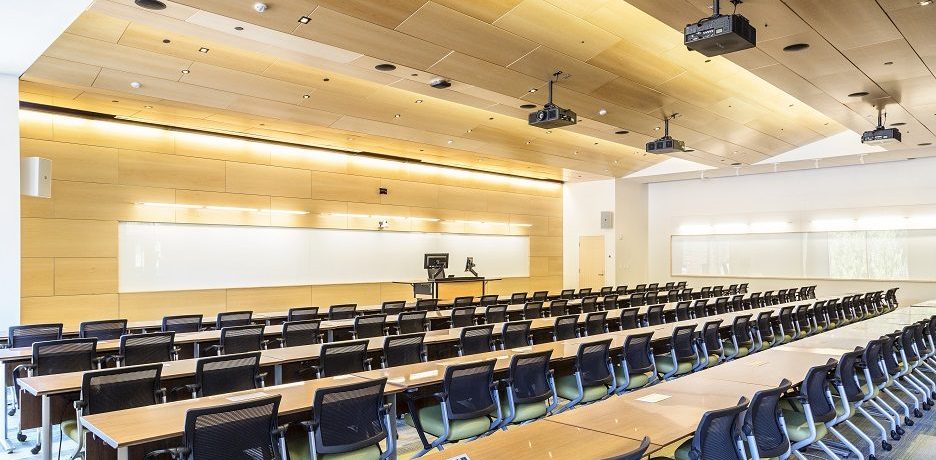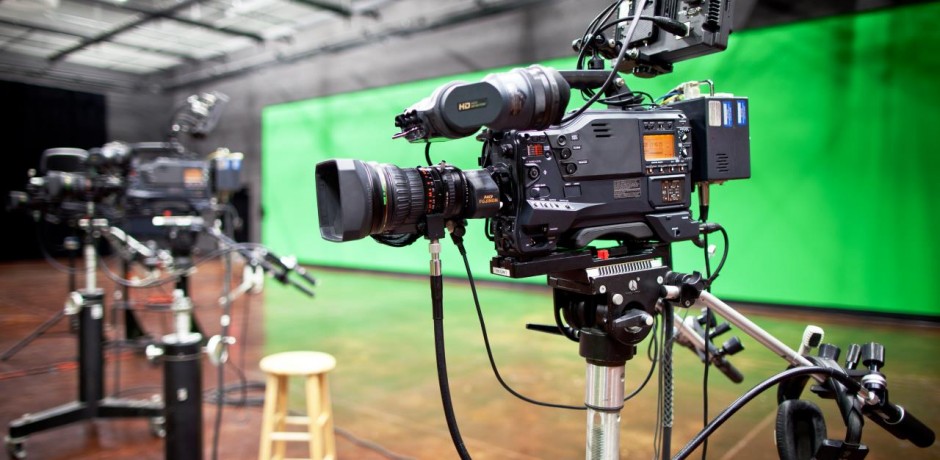Audio-Visual
A truly effective audio-visual presentation system must be planned, designed, and implemented as a fully integrated set of subsystems. A well-designed system should make any presentation easier and more effective, accommodating a wide variety of presentation types and presenter styles. Proper planning of a presentation system requires consideration of acoustics, lighting, potential audiences, and potential media formats ranging from speech reinforcement to multimedia presentations. A well-designed system should be as transparent as possible allowing the focus to be on the message.
The critical elements of a presentation system are sound quality, video resolution, supported media formats, and flexibility. Sound quality is determined by the quantity and quality of the components in the audio signal path. Video resolution and media formats are determined by the components in the video signal path and their bandwidth. Flexibility is achieved by providing enough headroom in the system and infrastructure to enable the incorporation of future technologies.
Proper planning begins with a detailed site investigation that includes a survey of site conditions. For existing facilities, a review of current systems and their effectiveness is necessary; for new facilities, acoustical modeling of the system environment may be necessary. Proper design also requires prioritizing a list of the desired system functionality and other design criteria for each space.
The next step in planning the presentation system involves analysis of the possible solutions on the basis of cost, quality, flexibility, advantages, and disadvantages. At this stage, potential solutions are examined for conflicts with other project concerns such as budget constraints.
Graphic Systems
Graphic systems can include support for video, data, graphics projection, slides, overheads, and film. In today’s quickly evolving technological society, presentation systems have become essential tools in the corporate workplace and educational facilities.
Sound Systems
Typical systems range from program audio support of presentation media to speech reinforcement to courtroom evidence presentation. The needs and demands of the overall system are considered in designing an appropriate audio system to support the presentation of information seamlessly and in a way that remains transparent to the audience.

Distribution Systems
The demand for the distribution of media is increasing from cable and satellite antenna distribution in college dormitory rooms to closed-circuit broadcasts in courthouses. New transport media and technologies with greater bandwidth, improved compression, and encryption have opened up new possibilities for the distribution of media within a facility, across the campus, and around the world.
Control Systems
Control systems are the integrating systems that allow the high level of transparency and flexibility in a system, or collection of systems, without strenuous or extensive user interaction. At the touch of a wireless color touch-screen, the presentation system can instantly change from one mode to another, increasing both the efficiency and effectiveness of the presentation and providing a myriad of presentation possibilities.

Videoconferencing and Collaboration
Distance learning in the educational system, videoconferencing in the corporate world, and remote arraignment in court systems are becoming common and more crucial in educating students, making business decisions, and administering justice.
Real-time remote collaboration is no longer a luxury, but a value-added tool, which as an investment quickly pays dividends to companies who can immediately start saving time and money. Videoconferencing coupled with collaborative meeting tools add a new dimension to resource pooling, and enable the delivery of detailed remote instruction without the expenditure of time and money involved in travel.
System Solutions
Determining the correct solution to a presentation situation requires an in-depth knowledge of new technologies and a thorough consideration of client needs and budgetary limitations.


